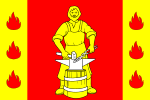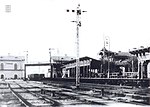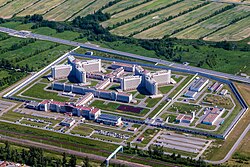Battle of the Neva
1240 in EuropeBattles involving SwedenBattles involving the Novgorod RepublicBattles of the Middle AgesConflicts in 1240 ... and 1 more
Wars involving Sweden

The Battle of the Neva (Russian: Невская битва, romanized: Nevskaya bitva; Swedish: slaget vid Neva; Finnish: Nevan taistelu) was fought between the Novgorod Republic, along with Karelians, and the Kingdom of Sweden, including Norwegian, Finnish and Tavastian forces, on the Neva River, near the settlement of Ust-Izhora, on 15 July 1240. The battle is mentioned only in Russian sources, and it remains unclear whether it was a major invasion or a small-scale raid. In Russian historiography, it has become an event of massive scale and importance.
Excerpt from the Wikipedia article Battle of the Neva (License: CC BY-SA 3.0, Authors, Images).Battle of the Neva
Нижняя Ижорская улица,
Geographical coordinates (GPS) Address Nearby Places Show on map
Geographical coordinates (GPS)
| Latitude | Longitude |
|---|---|
| N 59.8075 ° | E 30.604166666667 ° |
Address
Памятник Александру Невскому
Нижняя Ижорская улица
196645
Saint Petersburg, Russia
Open on Google Maps









